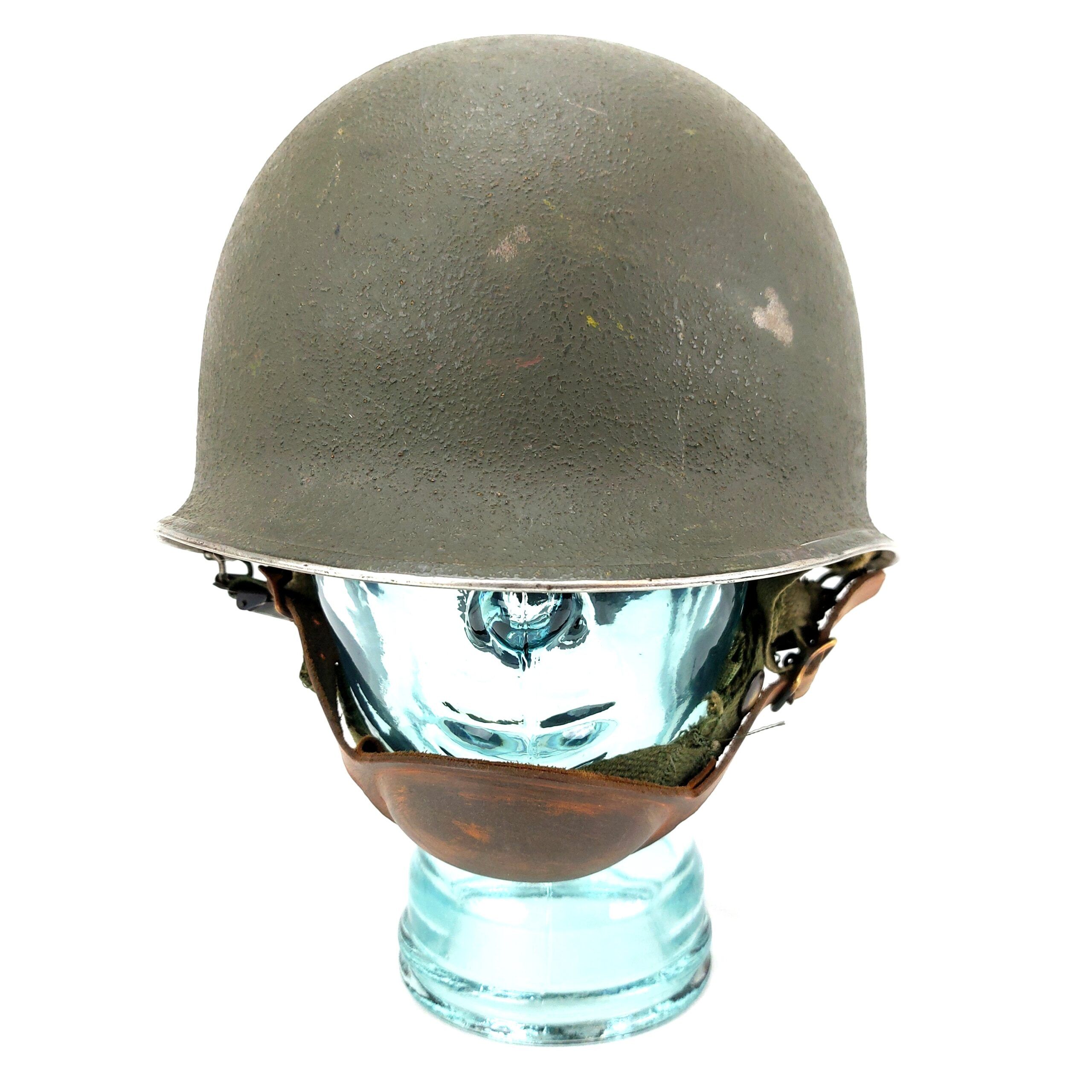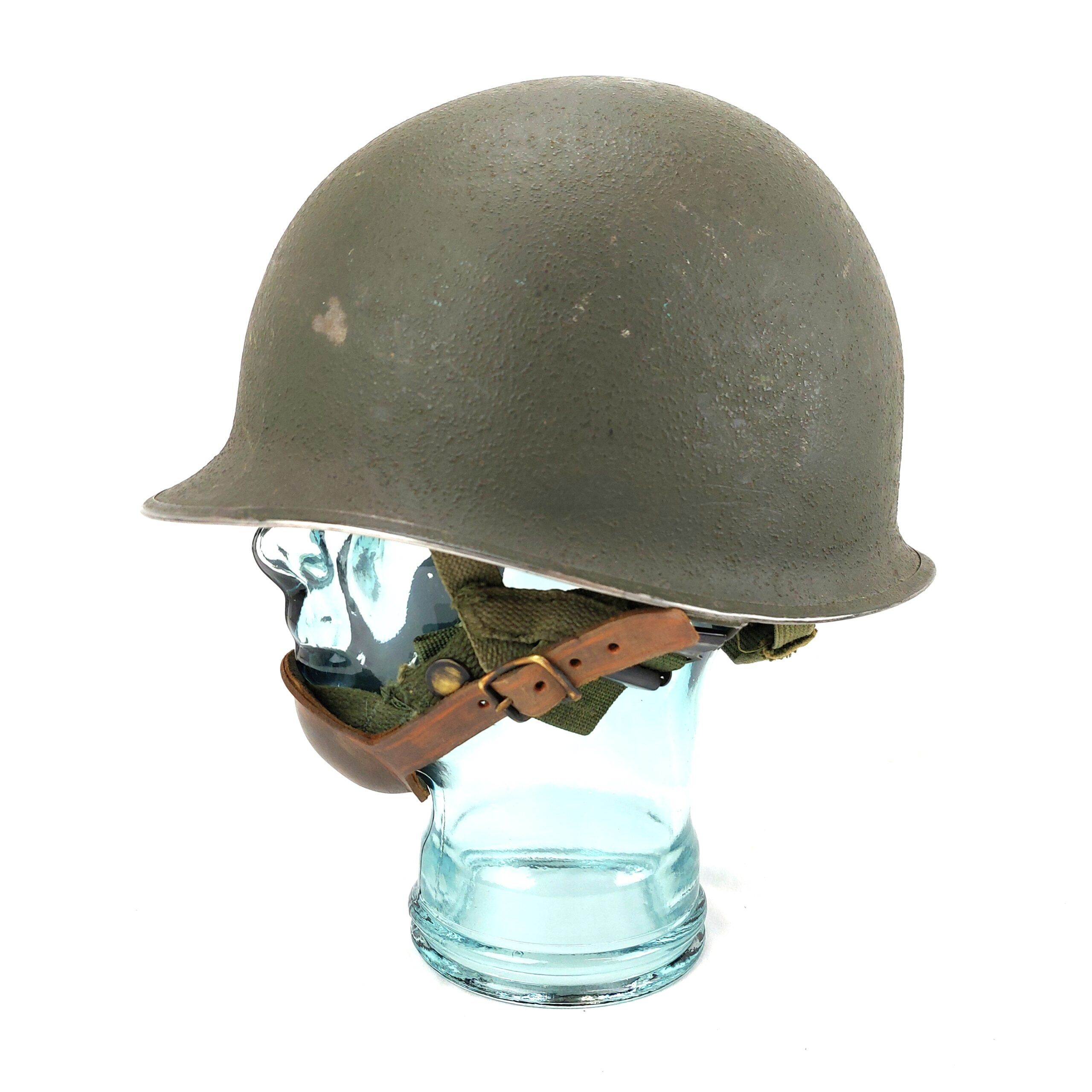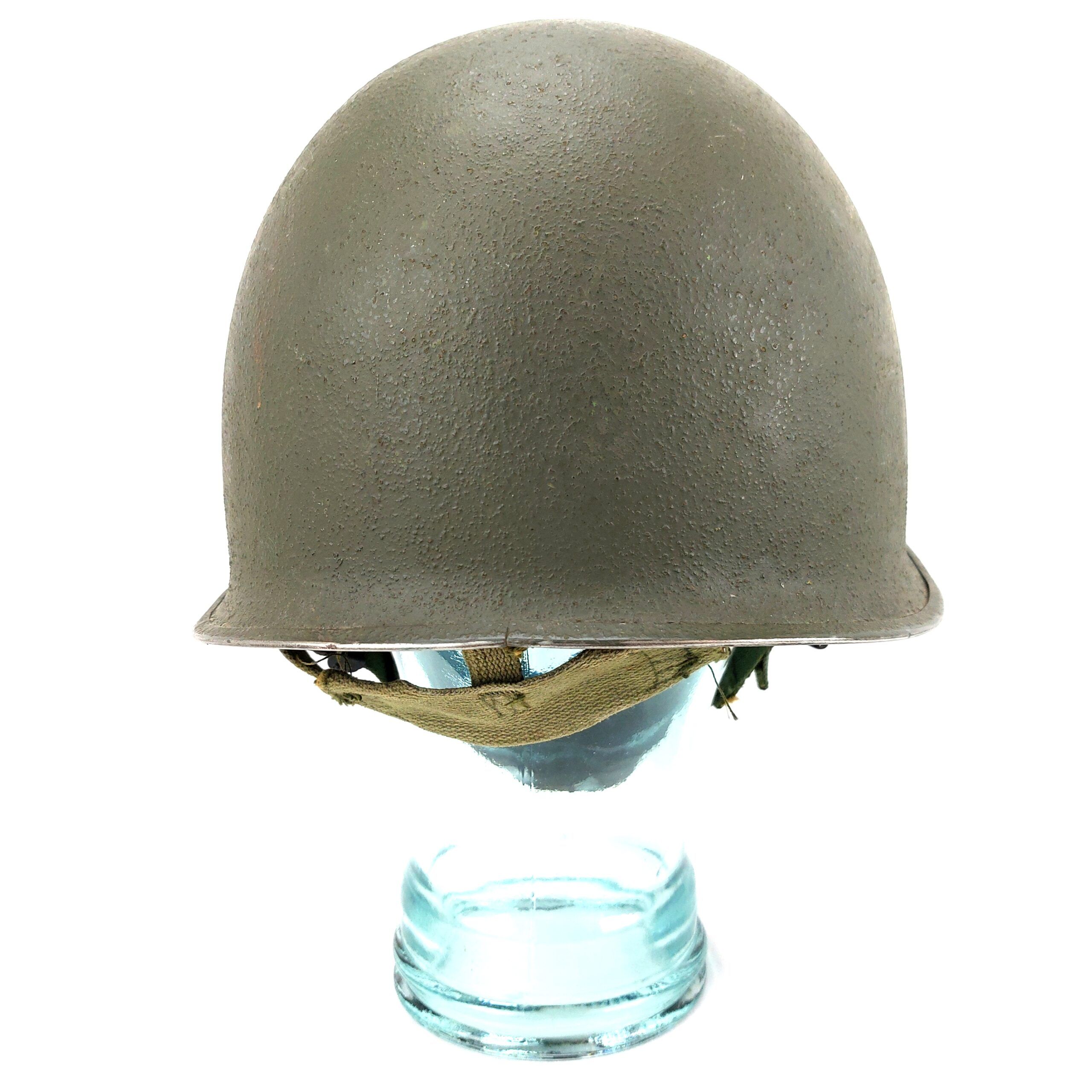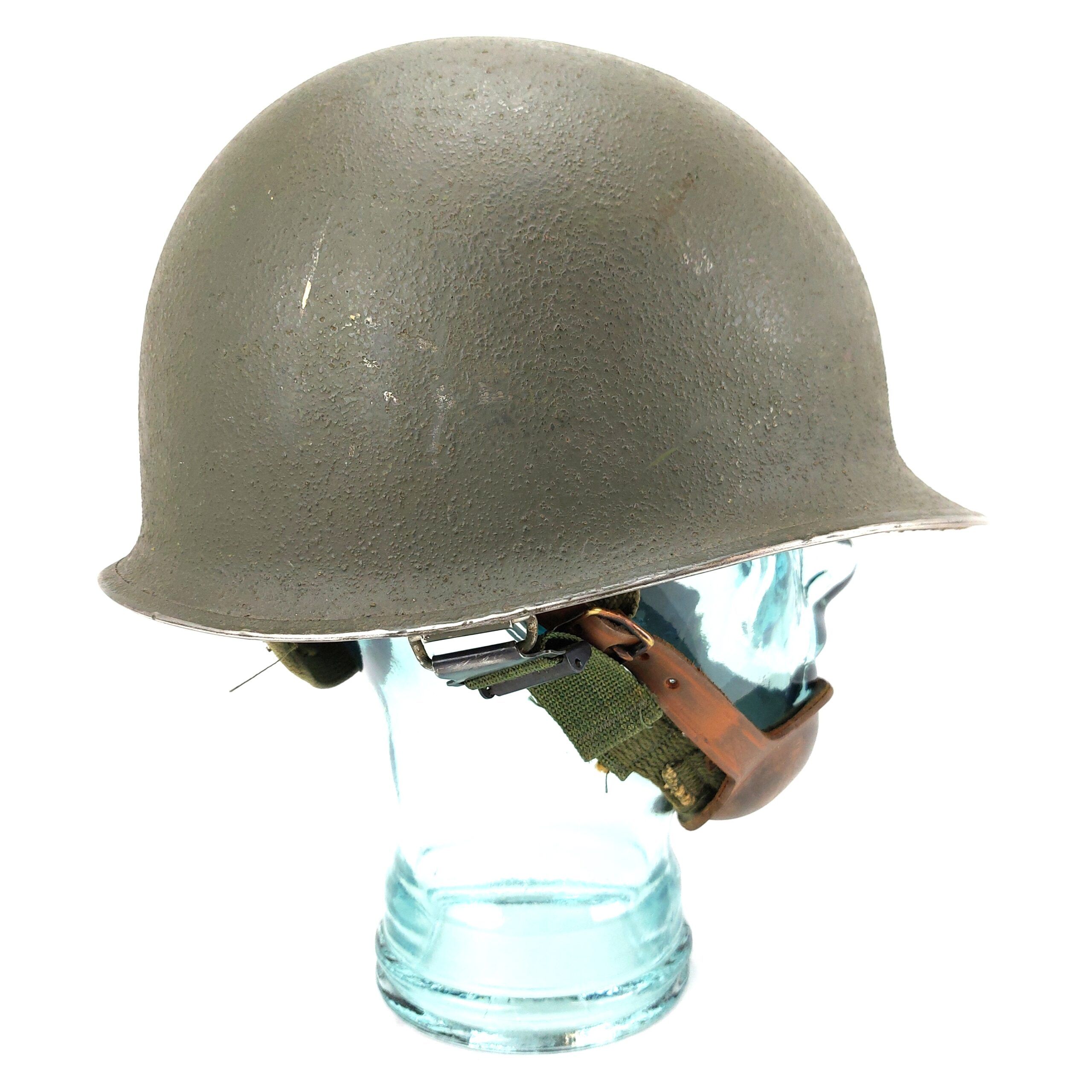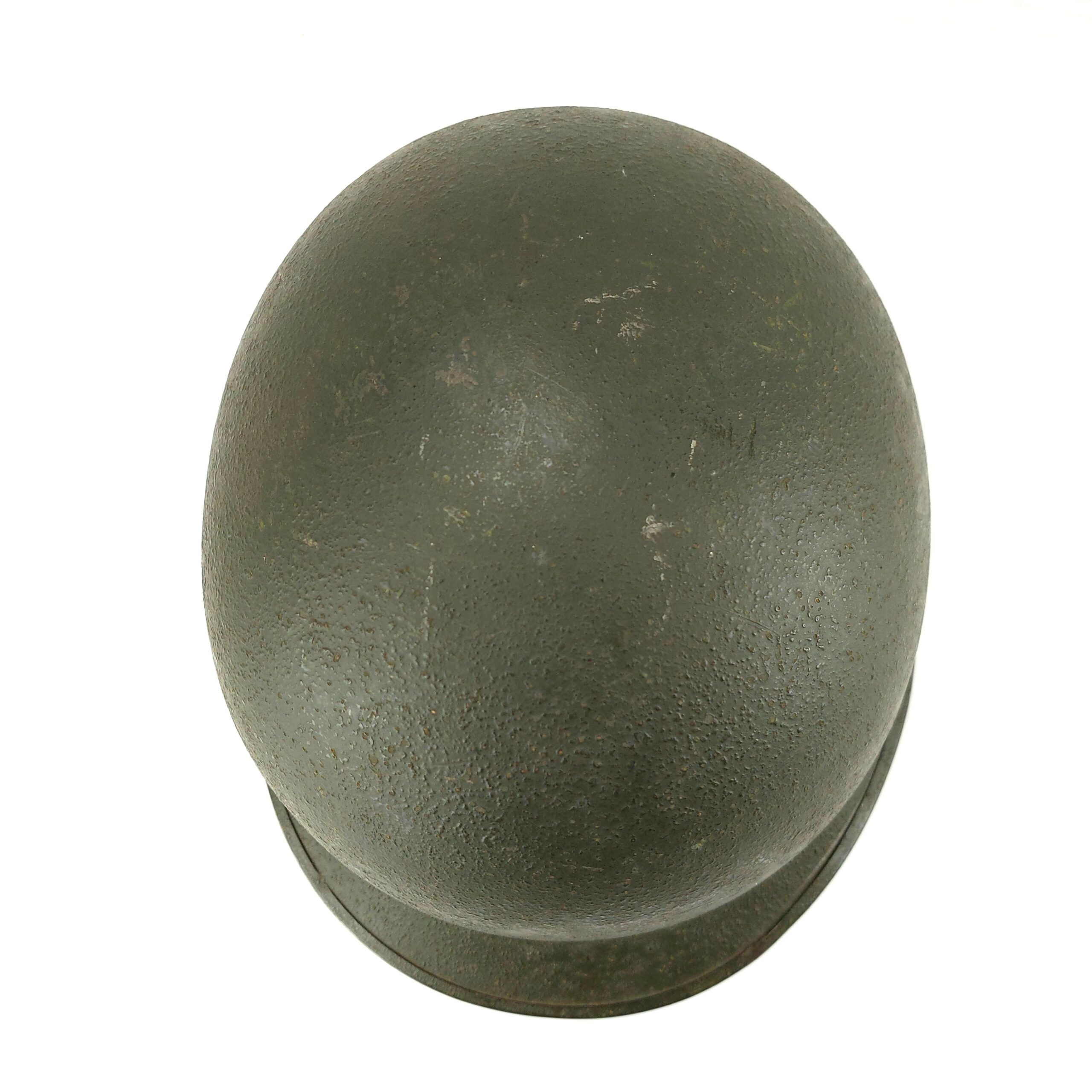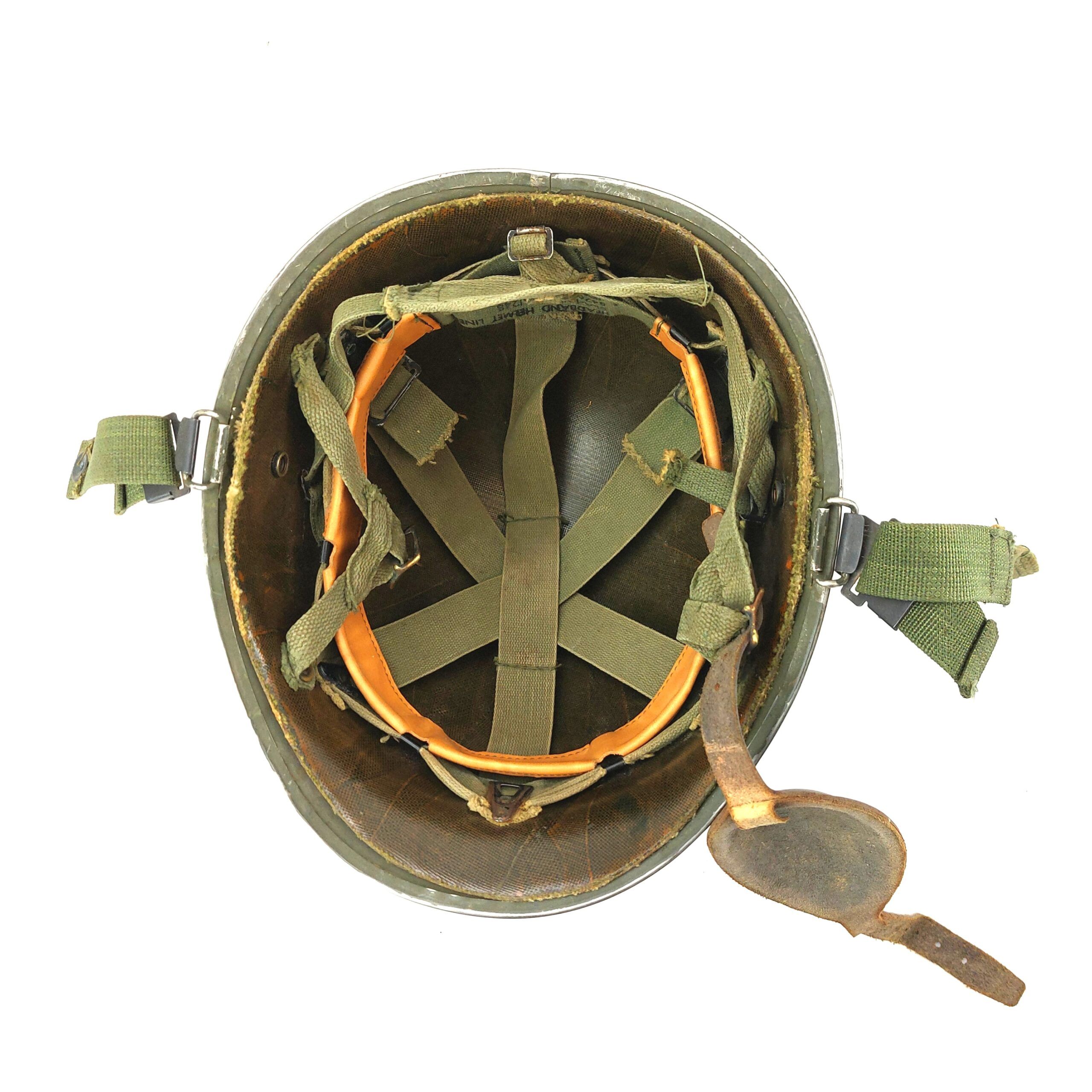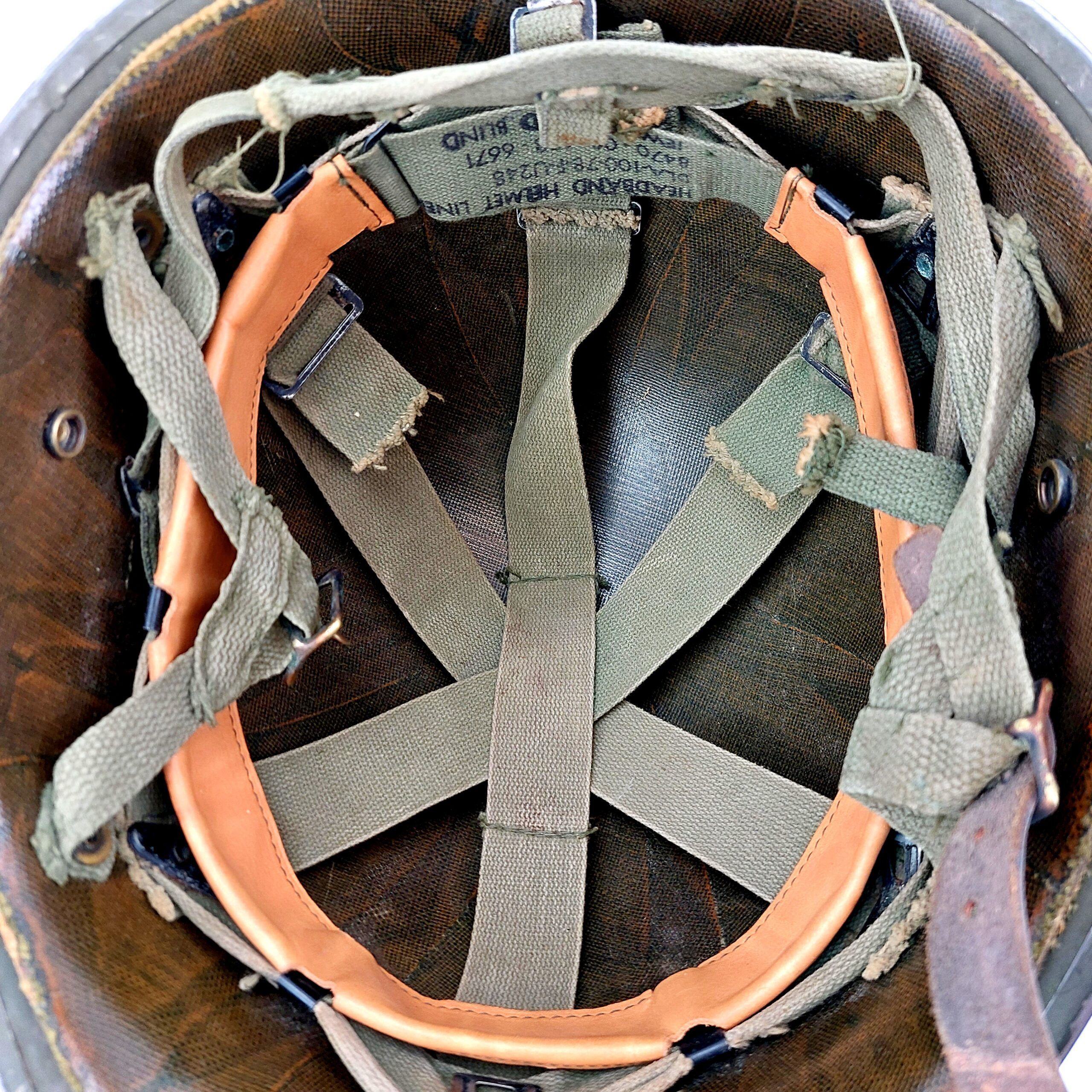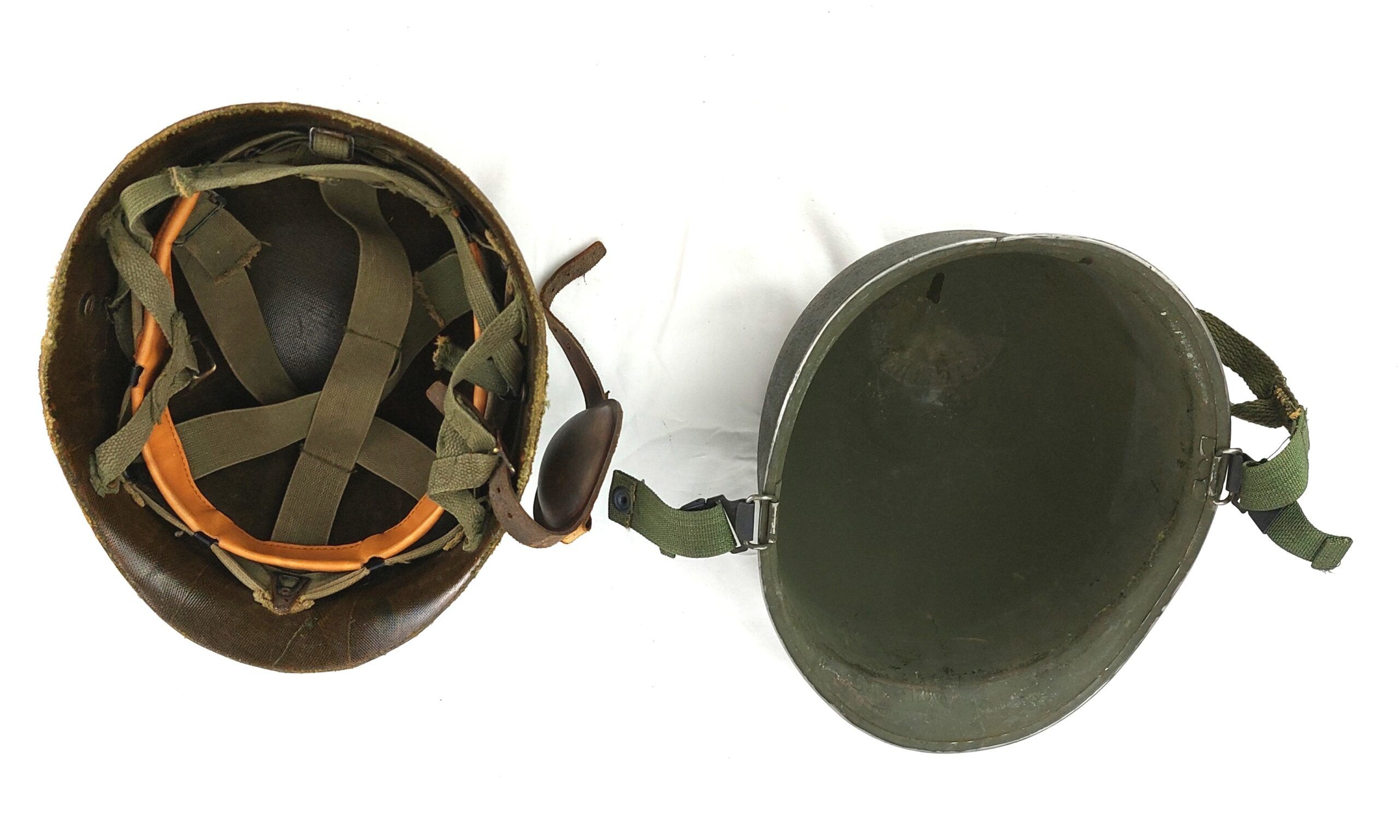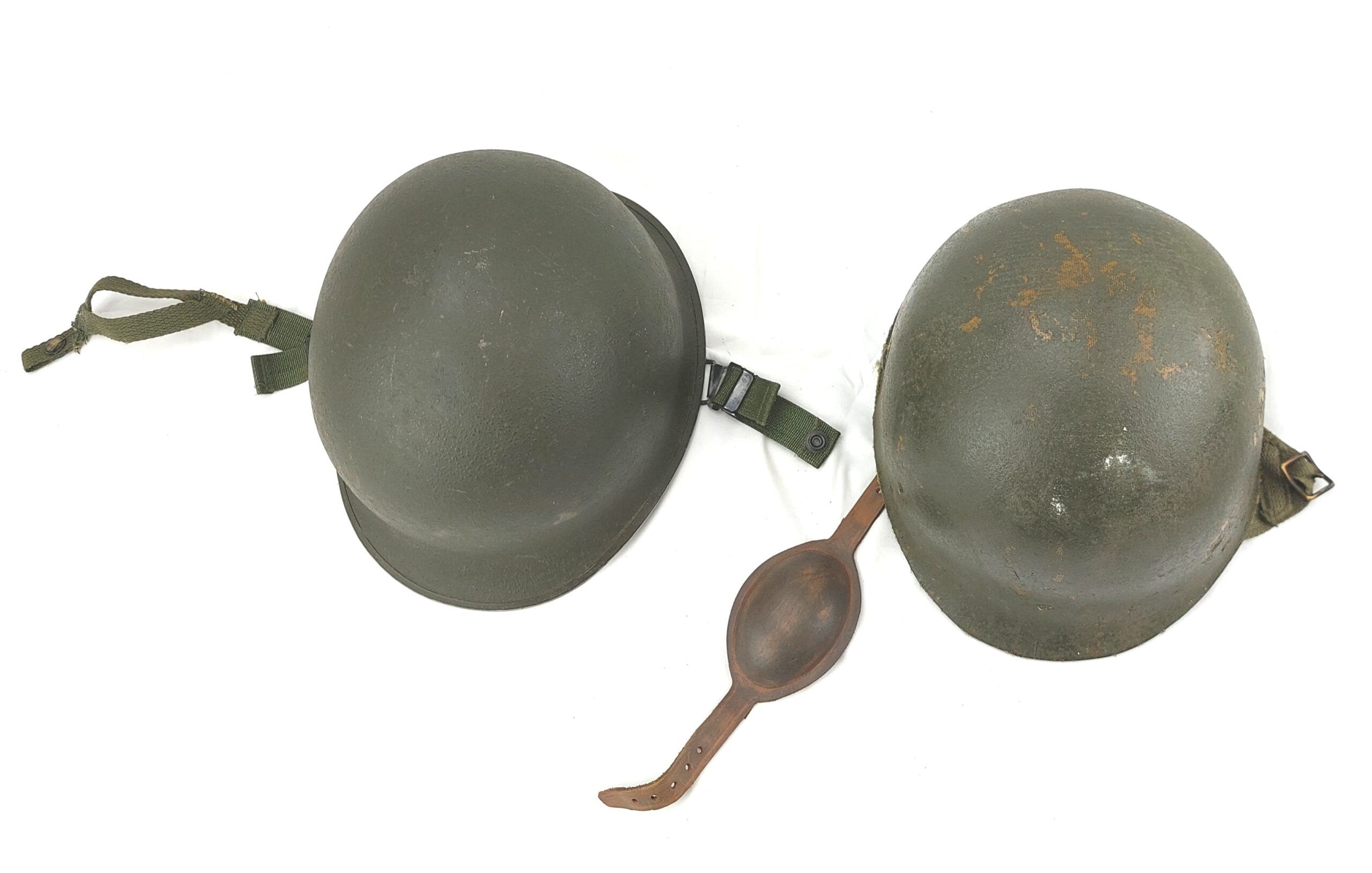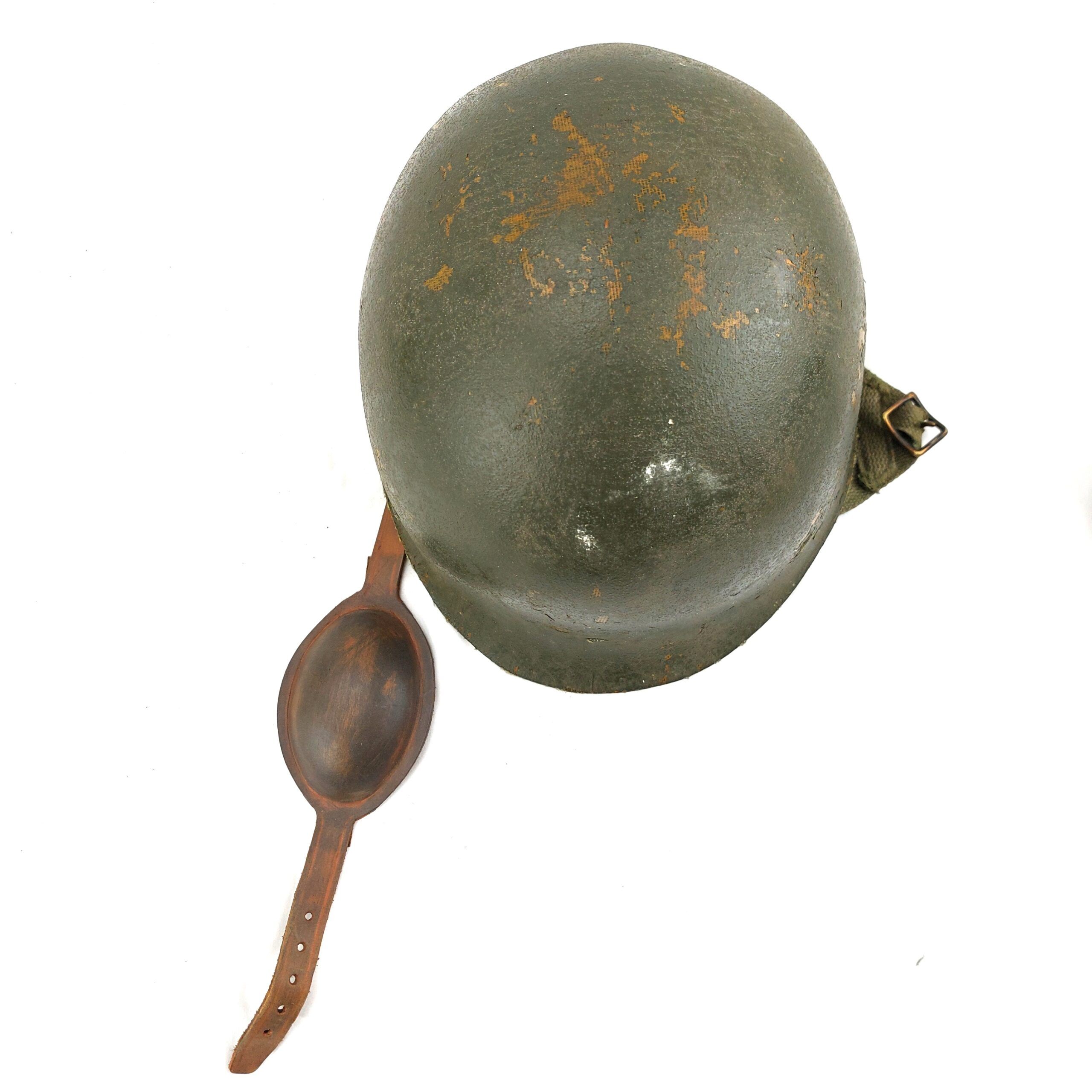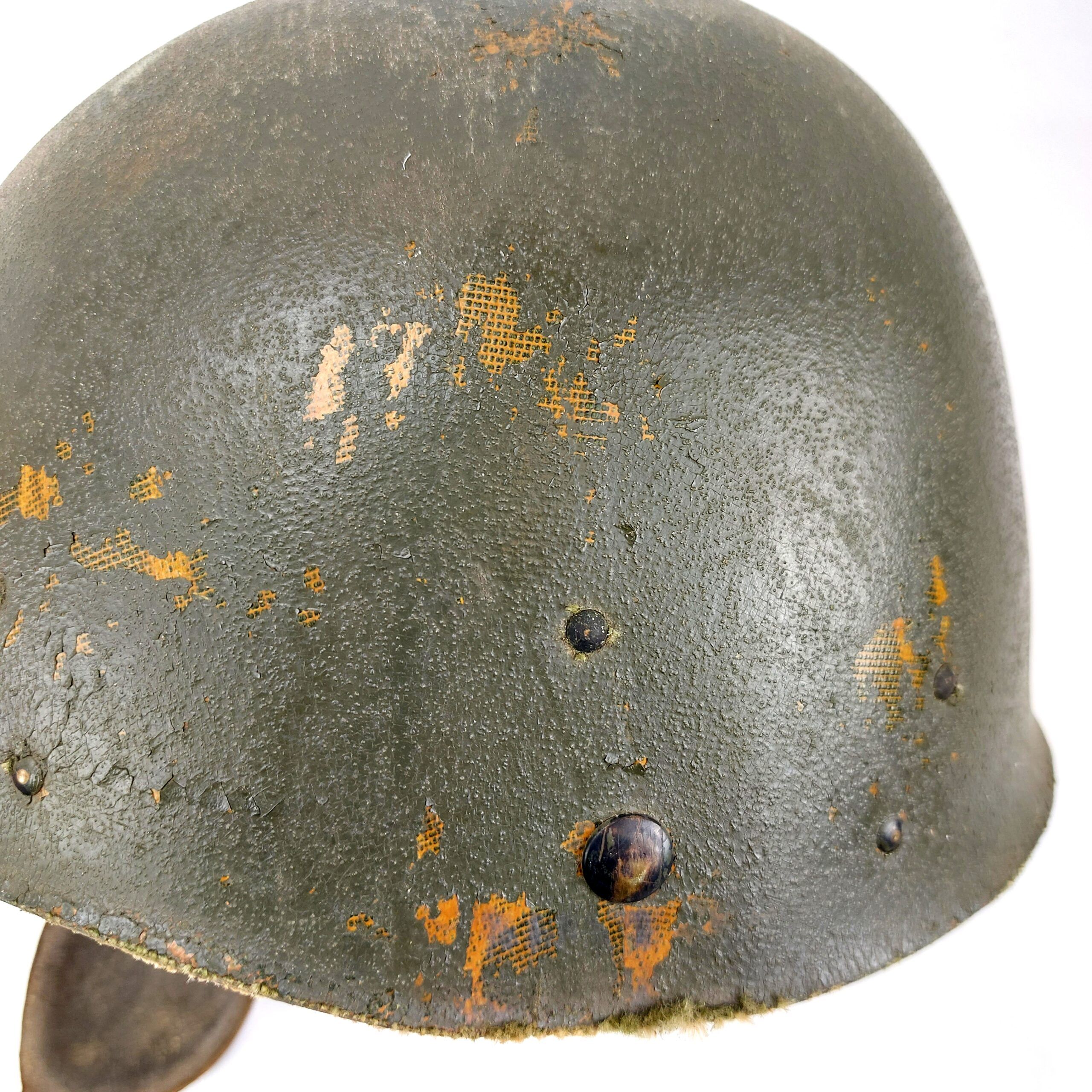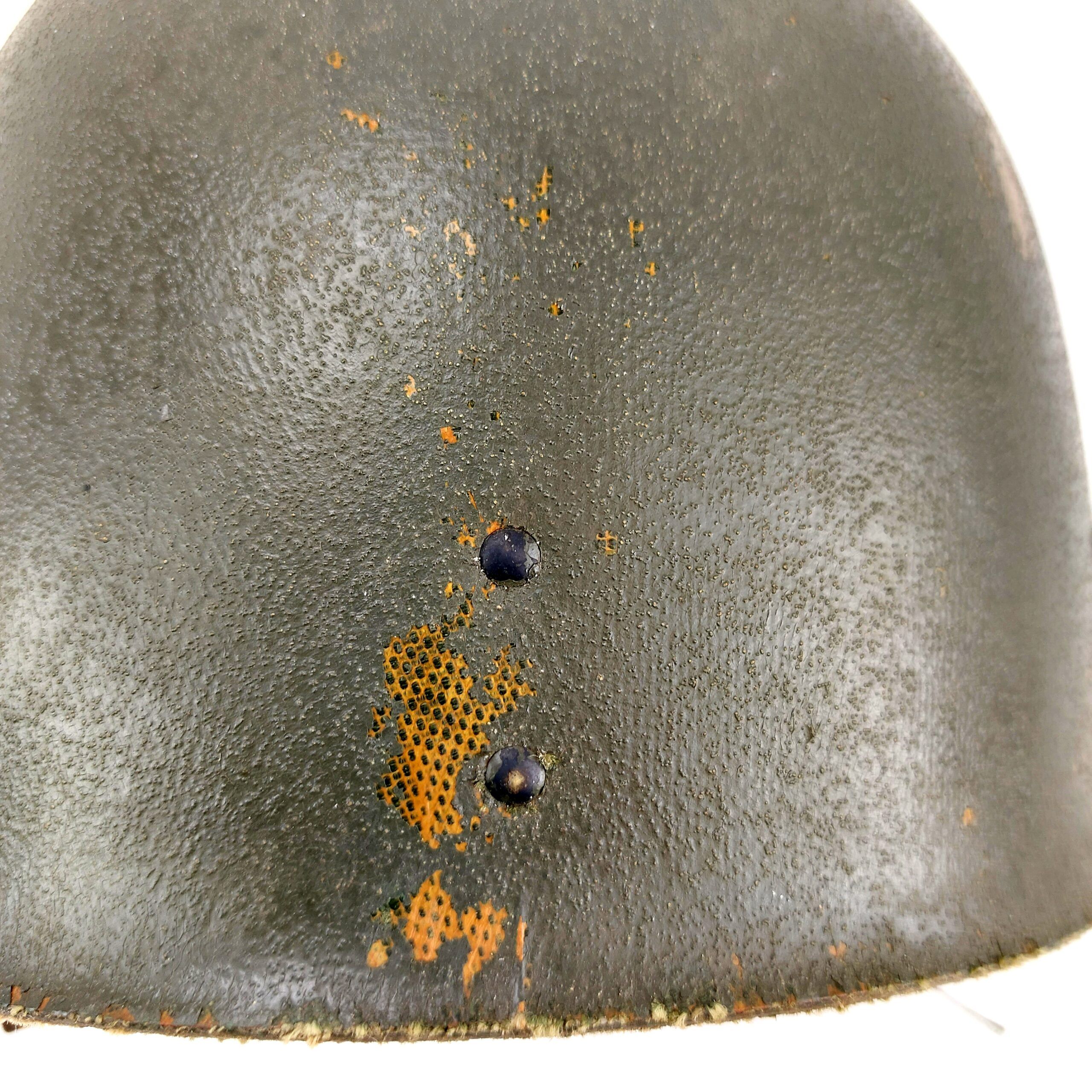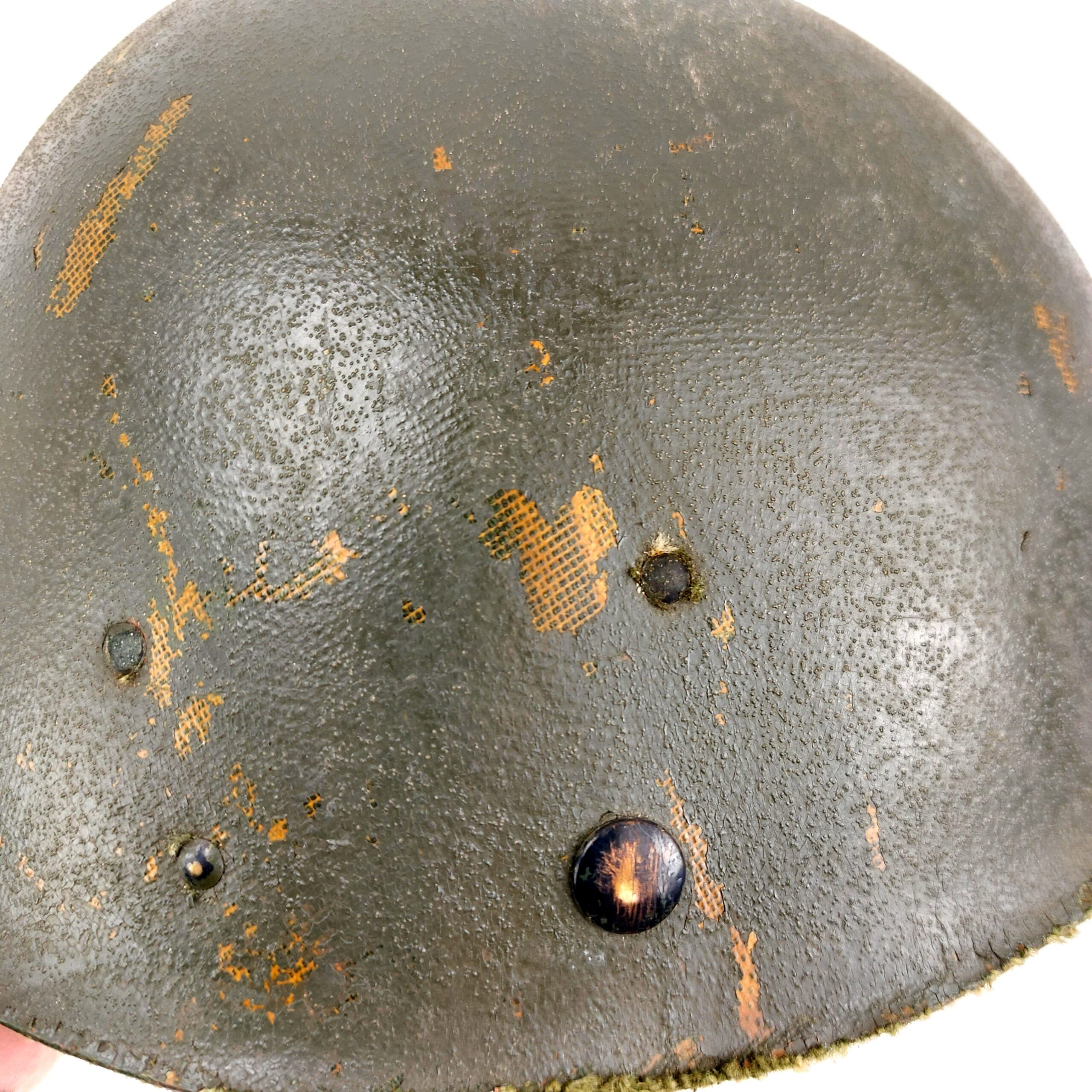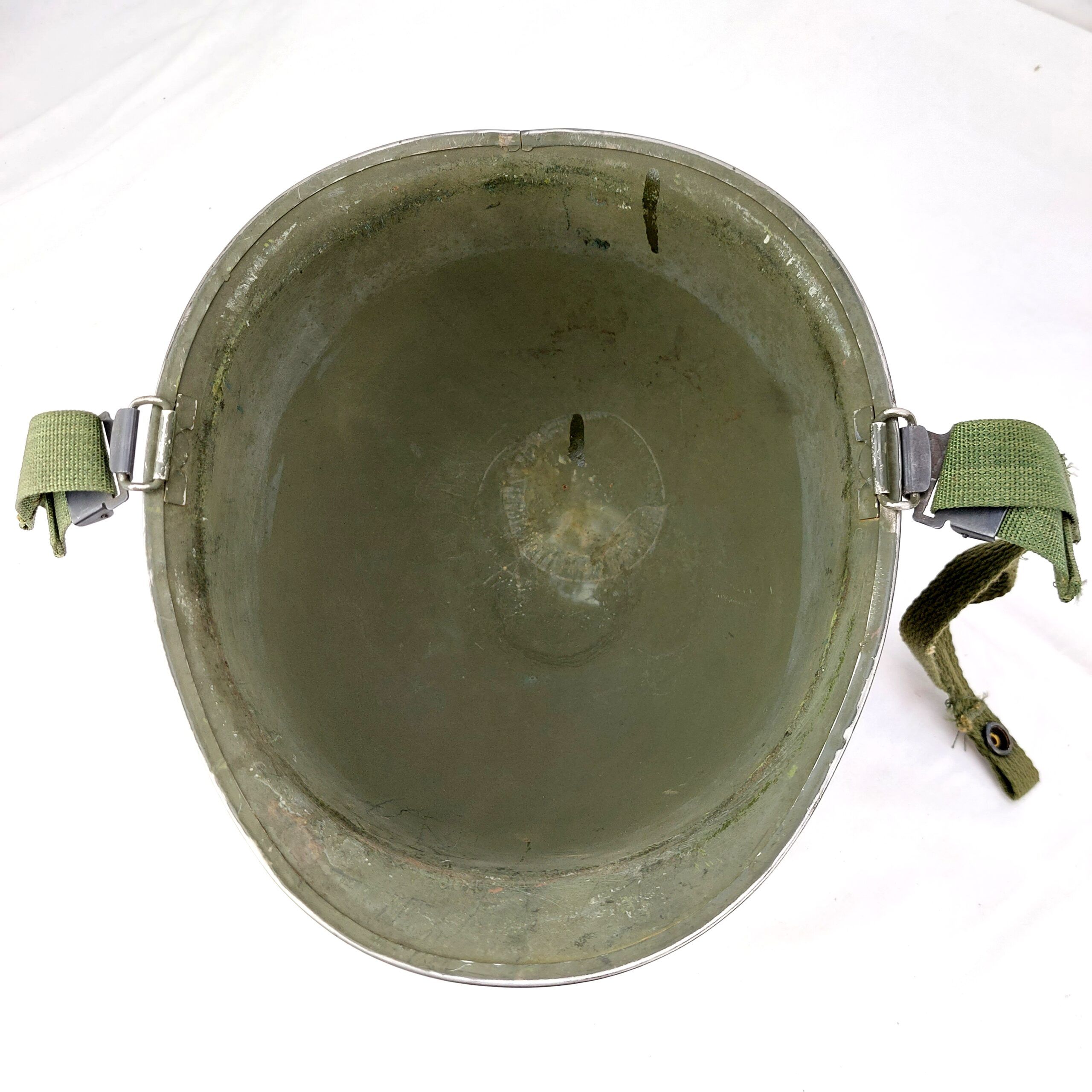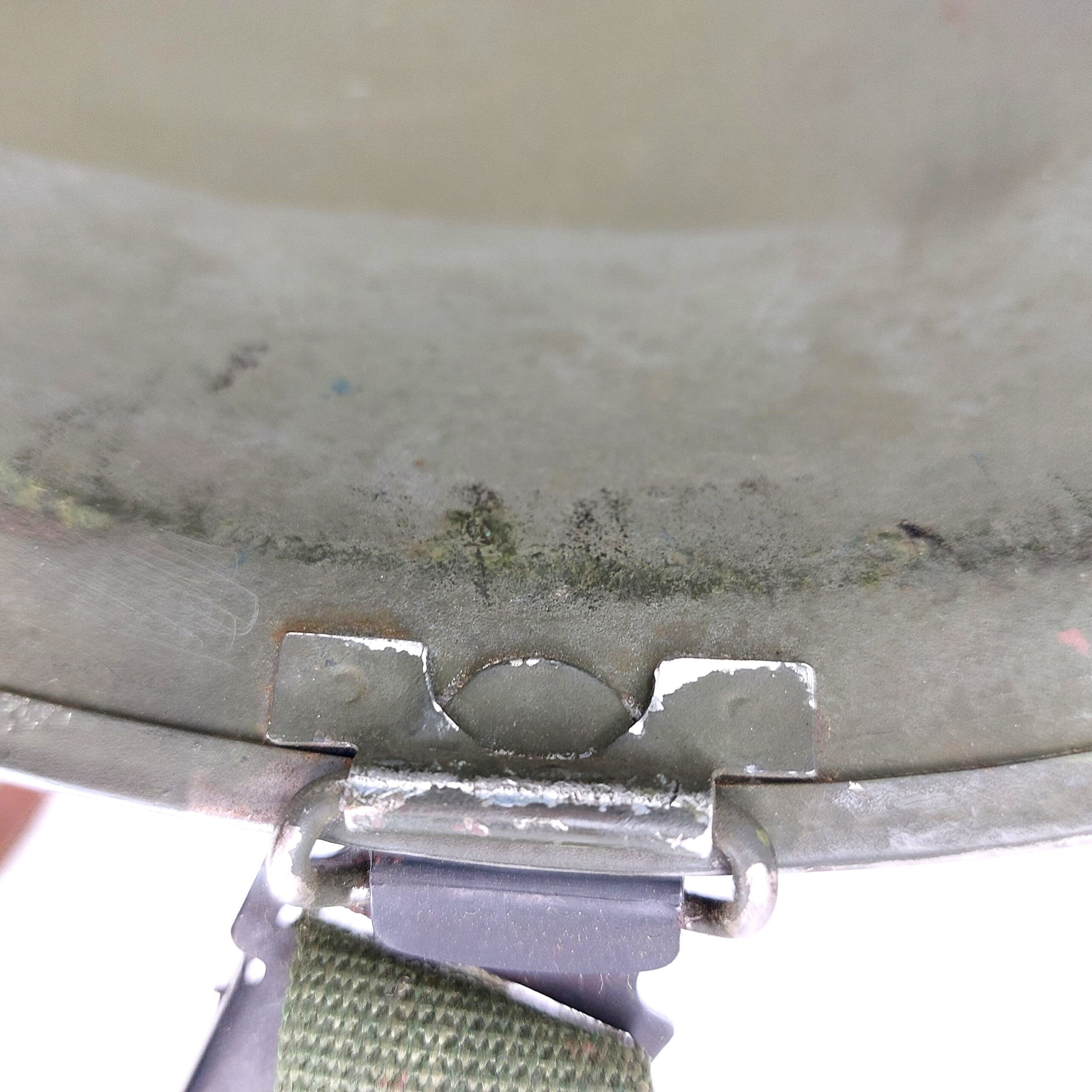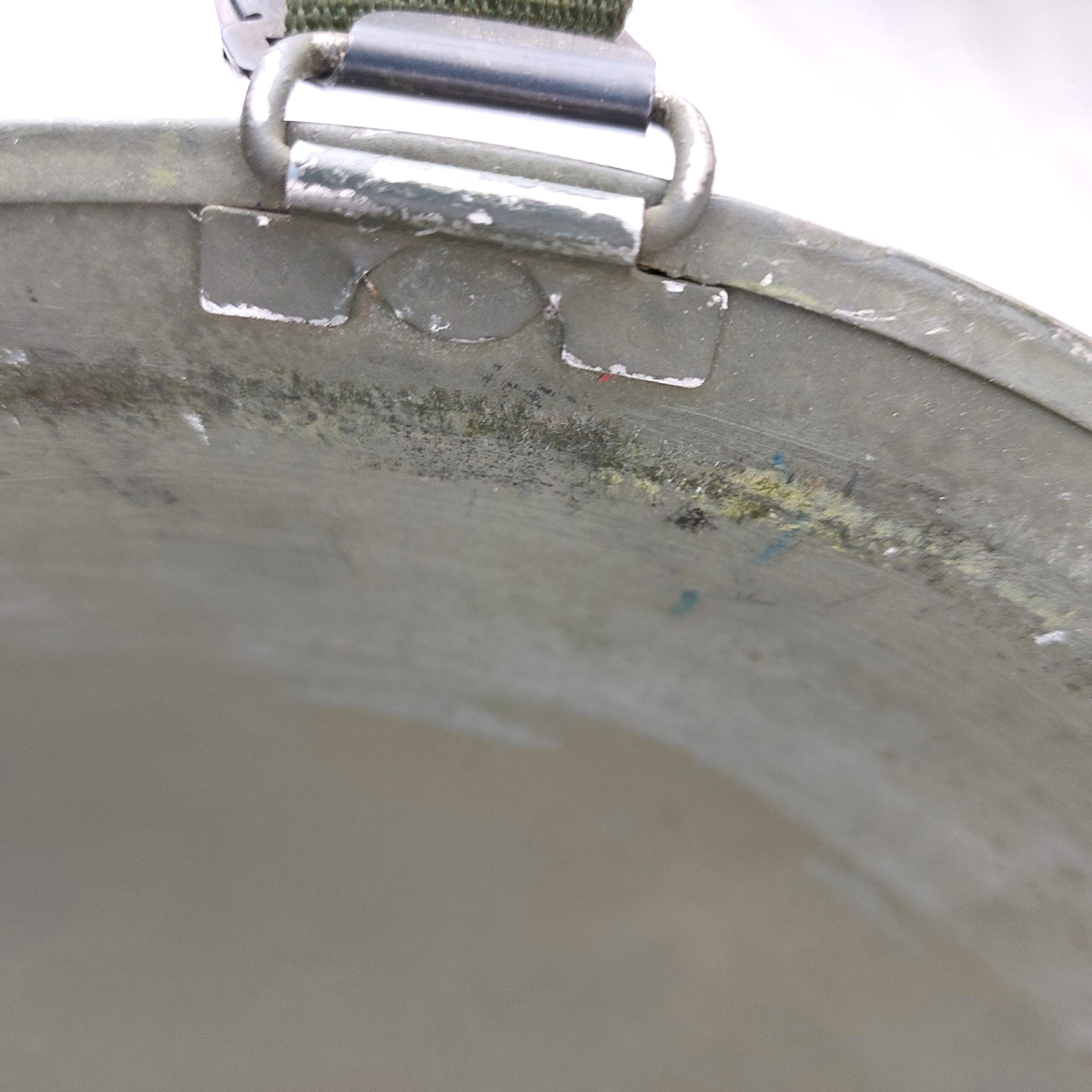*US, WW2 Era c1943/44 M1 Airborne Swivel Bale Helmet, Vietnam era Liner, Headband Webbing Dated 1978 Maker Stamped Jewish Guild Blind*
Ww2 era M1 Helmet Marked: Heatstamped in the front “1256A”, Stainless steel rim, rear weld seam
Vietnam era Liner: no discernable marks, blank label, fixed webbing.
Headband Helmet Liner, marked: DLA-100-78-F-U248, 8470-00-153-6671, Jewish Guild Blind. 78 indicates 1978
The American helmet used during World War II featured a two-piece design, consisting of an outer protective steel shell and an inner fiber liner, both of which were one-size-fits-all. The adjustable headband allowed for a customized fit for the wearer. It is common to find original M1 helmets paired with liners from later periods.
WW2 M1 Helmet: In October 1943, the Quartermaster Corps (QMC) decided to modify the chinstrap loops on the M1 helmet to a hinged “swivel” bale variety, with production of this new shell type beginning that same year. Physical evidence shows that airborne-modified helmets with both fixed and swivel chinstrap loops were in circulation towards the end of 1944. However, the term “M-1C” was not applied until January 1945. McCord Radiator and Manufacturing Company produced the majority of M1 helmet shells, manufacturing around 20 million helmets. These helmets typically only had a manufacturing number and alphabetical reference, with no other identification marks. Due to the significant issue of the brightness of the stainless steel rims, the Army Service Forces requested a correction in May 1944. The weld seam of the rim was also moved to the rear. Despite this change, numerous rear seam WWII-era shells with stainless steel rims exist, indicating that existing stocks of stainless rims were used up even after the modification was implemented.
Vietnam era Liner and webbing: period correct with fixed suspension, the label on the main webbing is blank.
Headband Liner: is a later addition, dated 1978. One of the most common labeling features on United States military equipment and clothing includes a DA, DSA, DLA, or SPO contract number stamp. The DLA stamp indicates the Defense Logistics Agency, which operated from 1978 to 1993. The Jewish Guild for the Blind is the maker of the headband and is historically very interesting. Workshops for the blind, operating as nonprofit charities and often in connection with social-service agencies, produced items primarily sold to the federal government. For the year ending September 30, 1978, the National Industries for the Blind reported $125 million in gross sales. Workers earned an average of $2.85 per hour, although many earned less than the $2.60 minimum wage at the time. Total payroll costs were below 20 percent of sales, which is below average for labor-intensive industries. In 1979, blind workers, with union support, sought to address the pay exploitation by changing laws that allowed charity groups to pay handicapped workers less than the minimum wage.
An investigation report by New York State Senator Franz S. Leichter stated:
“(The Jewish Guild for the blind) is the largest (work)shop in the State in terms of the size of its budget. We visited both locations of the Jewish Guild for the Blind. Their 65th Street headquarters building was erected in 1971. This eleven-story structure is very plushly appointed, especially the top floor which is entirely devoted to the Executive Offices. Most of the building houses facilities for various blind services, including a mental health clinic, offices for social workers, and craft rooms. Located in two sub-basements are sheltered workshops where linens are sewn for the State Office of General Services for use in hospitals, and where various other small items such as headbands and belts are manufactured for the United States Defense Department…… It is to be noted they were being paid less than half the minimum wage. Yet, they managed to smoothly produce items for the Defense Department, such as headbands and belts, with a value of well over $1 million.”
*Condition*
This Helmet is a fascination piece of history bearing witness to the warfields of WW2 through to Labour rights of the 1970’s. The helmet, liner and webbing are all in good condition, commensurate with age and usage. Please see photographs as part of the condition report.
JAQAOOXCBE_8681164376


